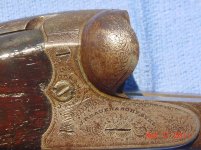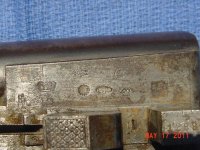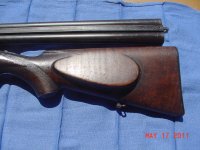Could you please give some info and value of my Sauer shotgun, I would like to know a ballpark value and the time of manufacture and any other info you may have or a site I could go to to get more info.
Double barrell 12 ga
Number on rear of trigger guard 128849
letters and numbers around screw on left and right side DRGM 130243
rt barrell krupp-essen
lt barrell fluss-stahl
the gun is in working condition but shows some wear. It was sent to the US by my father during World War II. He was in the US Army.
Double barrell 12 ga
Number on rear of trigger guard 128849
letters and numbers around screw on left and right side DRGM 130243
rt barrell krupp-essen
lt barrell fluss-stahl
the gun is in working condition but shows some wear. It was sent to the US by my father during World War II. He was in the US Army.
Attachments
Last edited:



